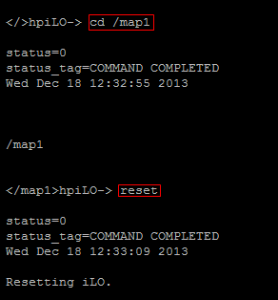

- #HP ILO 4 USE DIRECTORY DEFAULT SCHEMA SCRIPTING HOW TO#
- #HP ILO 4 USE DIRECTORY DEFAULT SCHEMA SCRIPTING INSTALL#
- #HP ILO 4 USE DIRECTORY DEFAULT SCHEMA SCRIPTING FULL#
- #HP ILO 4 USE DIRECTORY DEFAULT SCHEMA SCRIPTING SOFTWARE#
- #HP ILO 4 USE DIRECTORY DEFAULT SCHEMA SCRIPTING PASSWORD#
This too has created configuration file : /etc/sysconfig/network-scripts/ifcfg-eno33554992īut NIC is not activated by default, to activate it,use below : Nmtui > Edit a connection > enoxxx > Fill details like below In RHEL 7 default naming schema of NIC card is followed as enoXXX rather than ethXX. (b) In RHEL /CentOS 7 – nmtui NetworkManager utility To activate it use “ ifup eth1” command as used previously. Though device is created here by above steps & configuration file also created, but device is not active by default. # setup > Network configuration > Device configuration > New Device > Ethernet > Add Now the NIC will be up with IP address even after reboot.

NOTE: Be careful while using ‘service network restart’ as it will diconnect all active connection rather than resetting current NIC only. Subsequently one can bring it down using # ifdown Once the file is created correctly, one can activate that NIC card with below commands: More details about these parameters can be found at Line8: Gateway used to communicate with external world Line7: NETMASKn=mask: where mask is the netmask value and the n is expected to be consecutive positive integers starting from 0 Line6: IPADDRn=address: where address is the IPv4 address and the n is expected to be consecutive positive integers starting from 0

Line5: BOOTPROTO=protocol: Booting protocol, other values can be bootp & dhcp as well. Line4: NM_CONTROLLED=answer: whether NetworkManager is permitted to configure this device Line2: HWADDR=MAC-address: hardware address of the Ethernet device in the form AA:BB:CC:DD:EE:FF Line1: DEVICE= name: name is the name of the physical device In order to make it permanent, we need to add it under configuration files with NIC names (ifcfg-ethXX) created under /etc/sysconfig/network-scripts/ directory.

# ifconfig eth1 192.168.154.23 netmask 255.255.255.0Ībove method is simple, but having drawback that IP is not configured permanently and will be wiped out on reboot. So make sure the NIC you choose is free for use. NOTE: Sometimes an environment can have bonding configured or NIC acting as fail over NIC (act as LB), so there is possibility that IP is not assigned on that NIC. HP is introducing the all-new HP ProLiant BL685c server, featuring up to four AMD Opteron 8000 Series processors, up to 64GB of ECC 667MHz DDR2 memory, four embedded NICs, three I/O expansion slots, and your choice of up to two hot-plug SAS or SATA drives, ideal for the most demanding enterprise class applications.
#HP ILO 4 USE DIRECTORY DEFAULT SCHEMA SCRIPTING HOW TO#
So let’s focus here on how to enable our Network Adapter (Physical or Virtual) to communicate with other machines by setting an IP over it.Īny available NIC where IP’s are not assigned can be easily viewed under below command: (here eth1) In order to communicate with another server in same network, one need it’s Fully Qualified domain name (FQDN) or IP address.
#HP ILO 4 USE DIRECTORY DEFAULT SCHEMA SCRIPTING PASSWORD#
NOTE: The USER_LOGIN and PASSWORD tags are required, and must contain data, although any data is accepted.Ĭ:\Program Files\HP\hponcfg>hponcfg /f your_script_name.One can’t stay forever in an isolated World, and same applies for server as well. To modify the network settings I created the following script: RIBCL allows you to write XML scripts to configure and manage iLO config settings. To change settings you need to create an xml file containing the parameters you want to change, formatted using the RIBCL language. To write the current iLo configuration simply open a cmd prompt and execute the following command:Ĭ:\Program Files\HP\hponcfg>hponcfg /w iLoConfig.xml
#HP ILO 4 USE DIRECTORY DEFAULT SCHEMA SCRIPTING INSTALL#
Default install directory = C:\Program Files\HP\hponcfg.
#HP ILO 4 USE DIRECTORY DEFAULT SCHEMA SCRIPTING SOFTWARE#
This API follows the trend of the Internet in moving to a common pattern for new software interfaces.
#HP ILO 4 USE DIRECTORY DEFAULT SCHEMA SCRIPTING FULL#
This little tool is installed as part of the ProLiant Support Pack and can be used to make config changes to iLo without the need to reboot. Using this API you can take full inventory of the server, control power and reset, configure BIOS and iLO 4 settings, fetch event logs as well as many other things. Normally this wouldn’t be to big an issue – except A) The IP address and default gateway were pointing to a subnet which no longer existed and B) The HP System Management Homepage wasn’t connecting to the agents correctly.įortunately the HPONCFG utility came to my rescue. I recently found myself in a situation where I had rebuilt and shipped a server to a remote office but forgotten to configure the iLo settings. (3) Run: hponcfg /f ilo.xml (this writes new configuration back to the iLO) (3) edit newly created ilo.xml to the values that you want to use (1) Run: hponcfg /w ilo.xml (this dumps iLO configuration into ilo.xml file)īE CAREFUL, will reset to factory defaults * (2) Run: hponcfg reset (resets iLO) * Reconfigure iLo network settings using HPONCFG Dumps iLO configuration into ilo.xml file


 0 kommentar(er)
0 kommentar(er)
